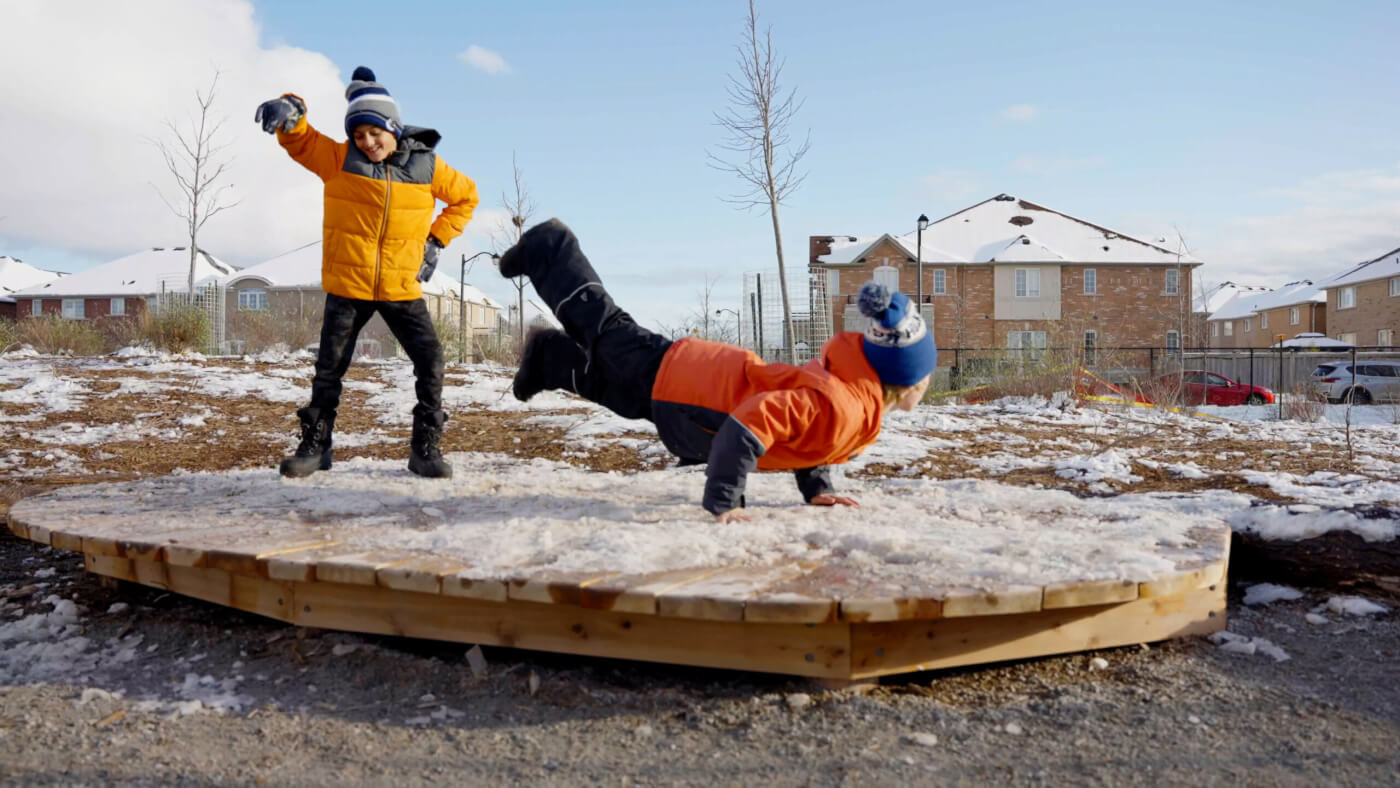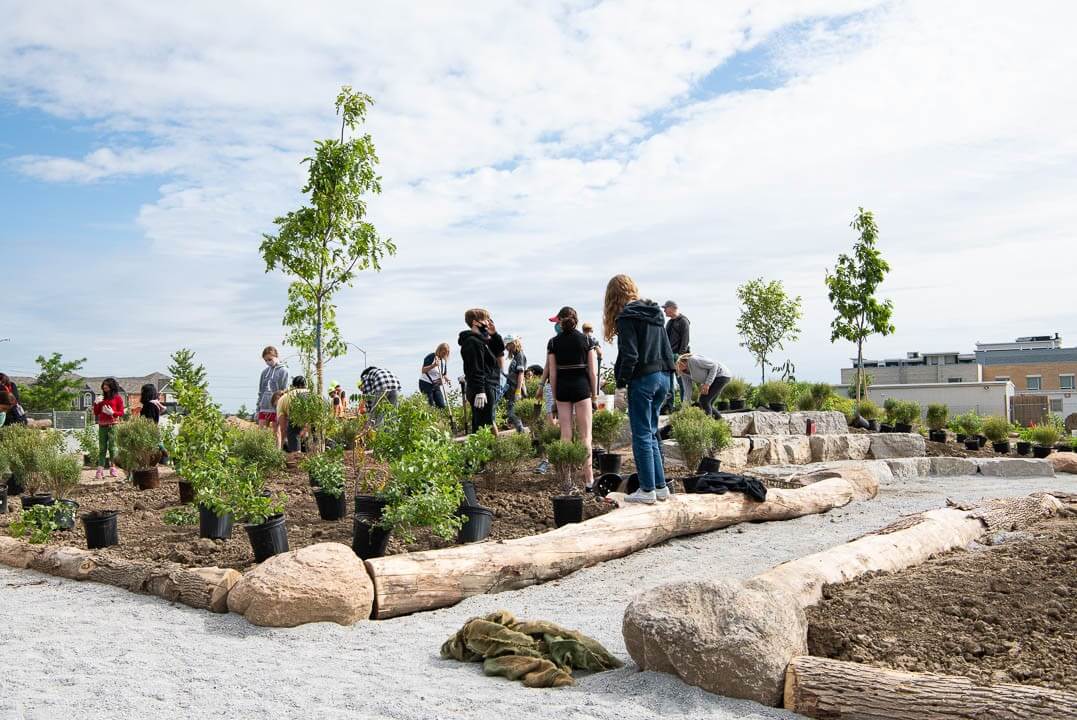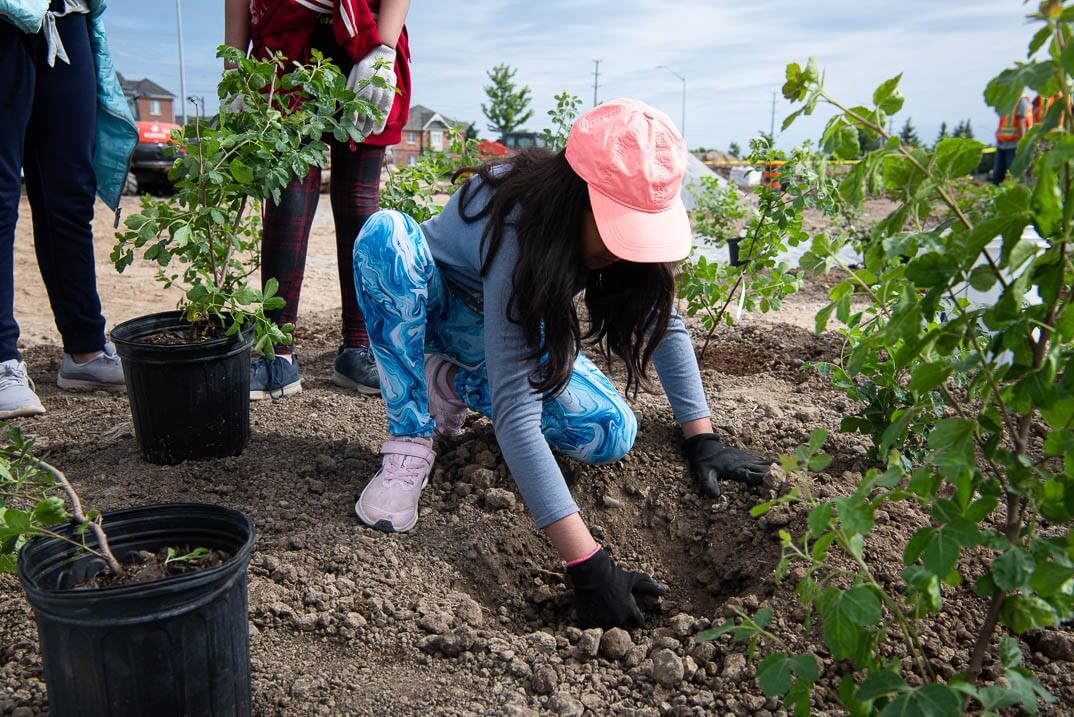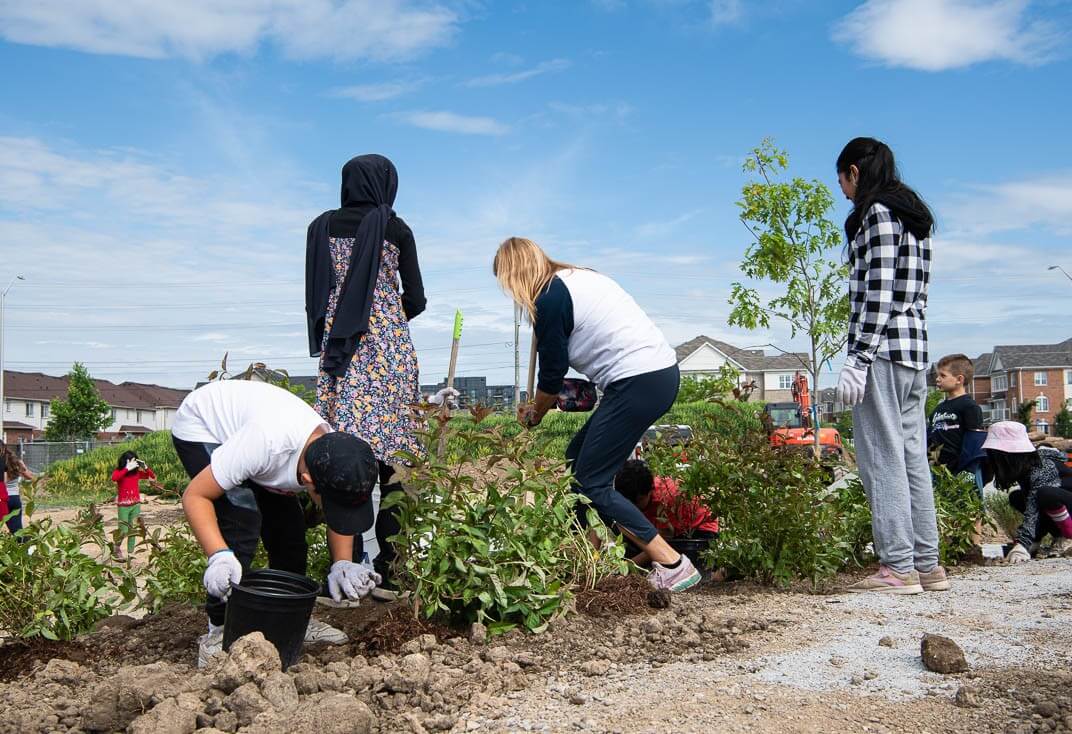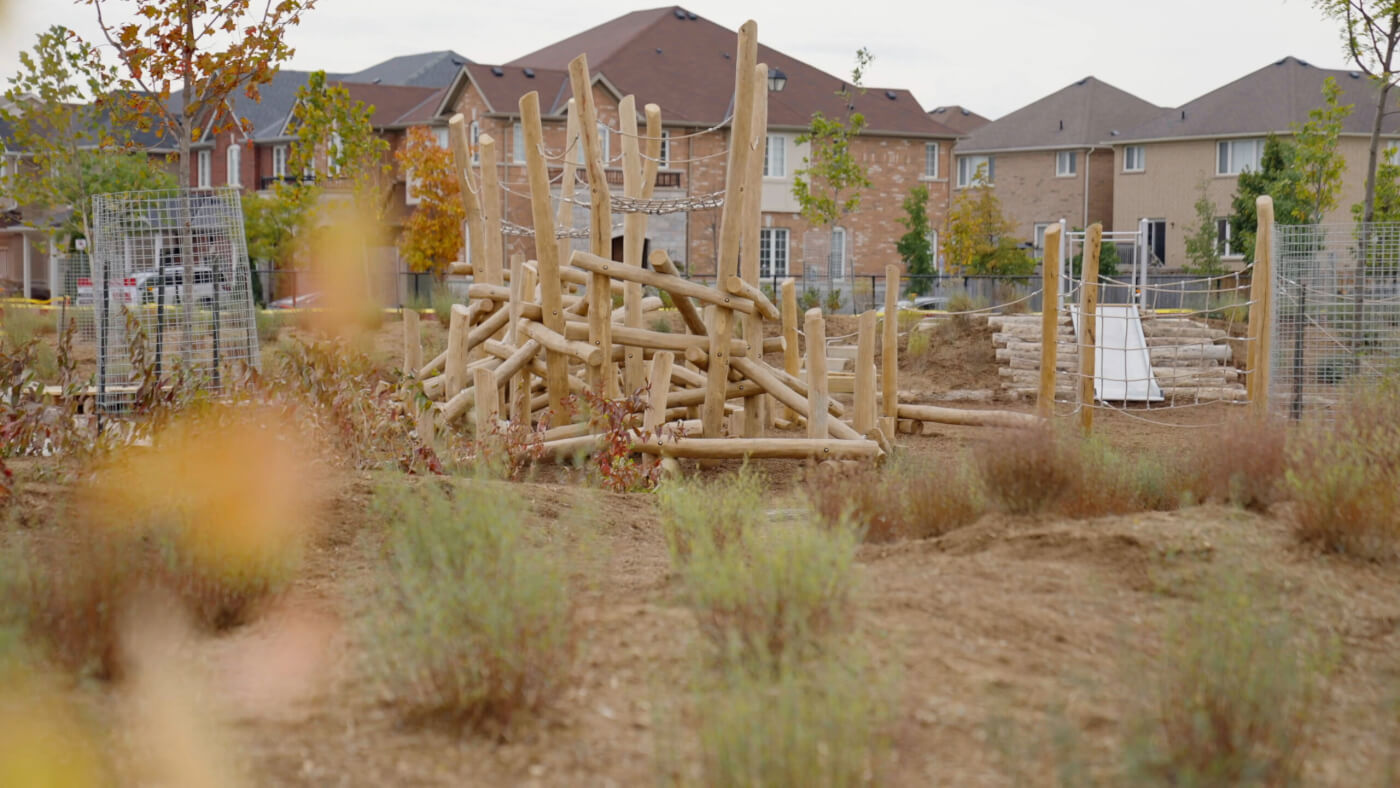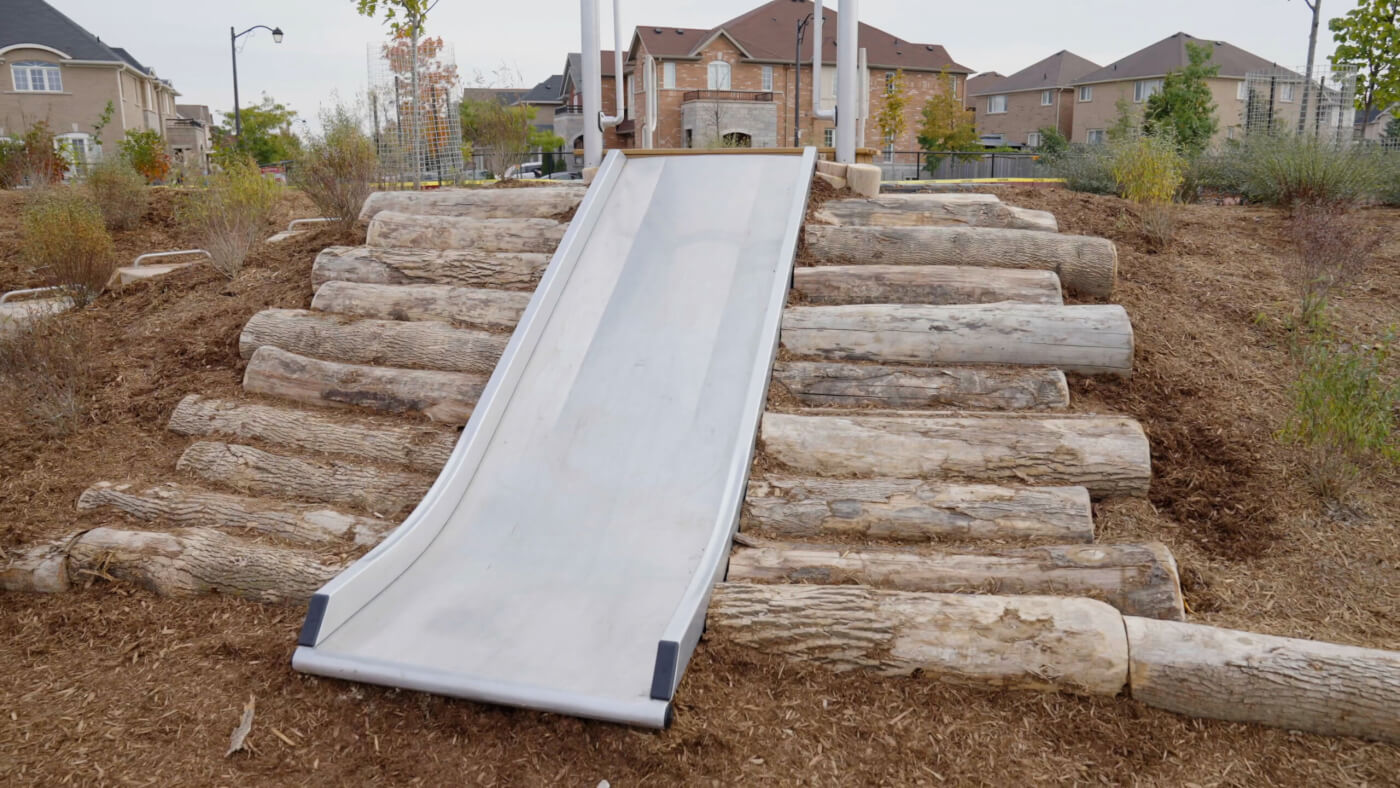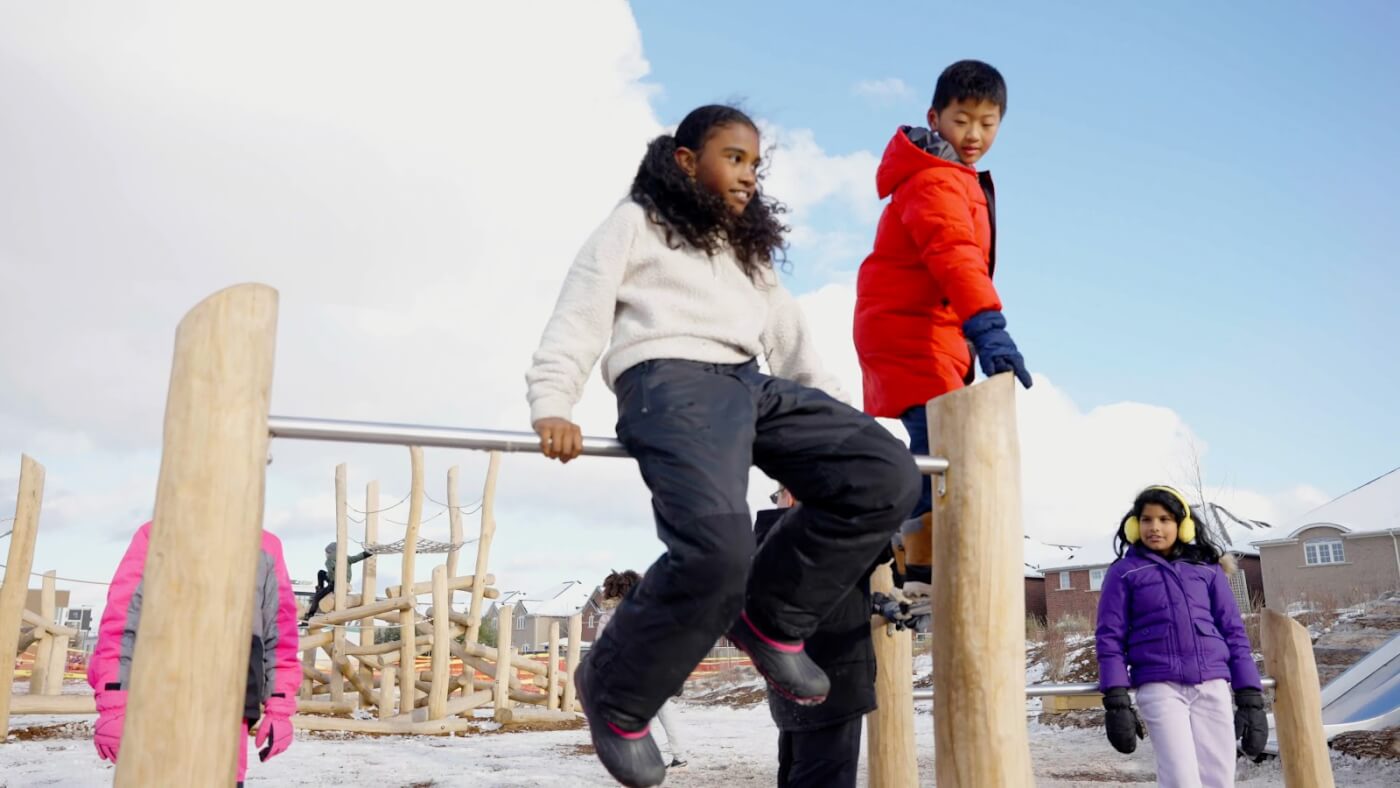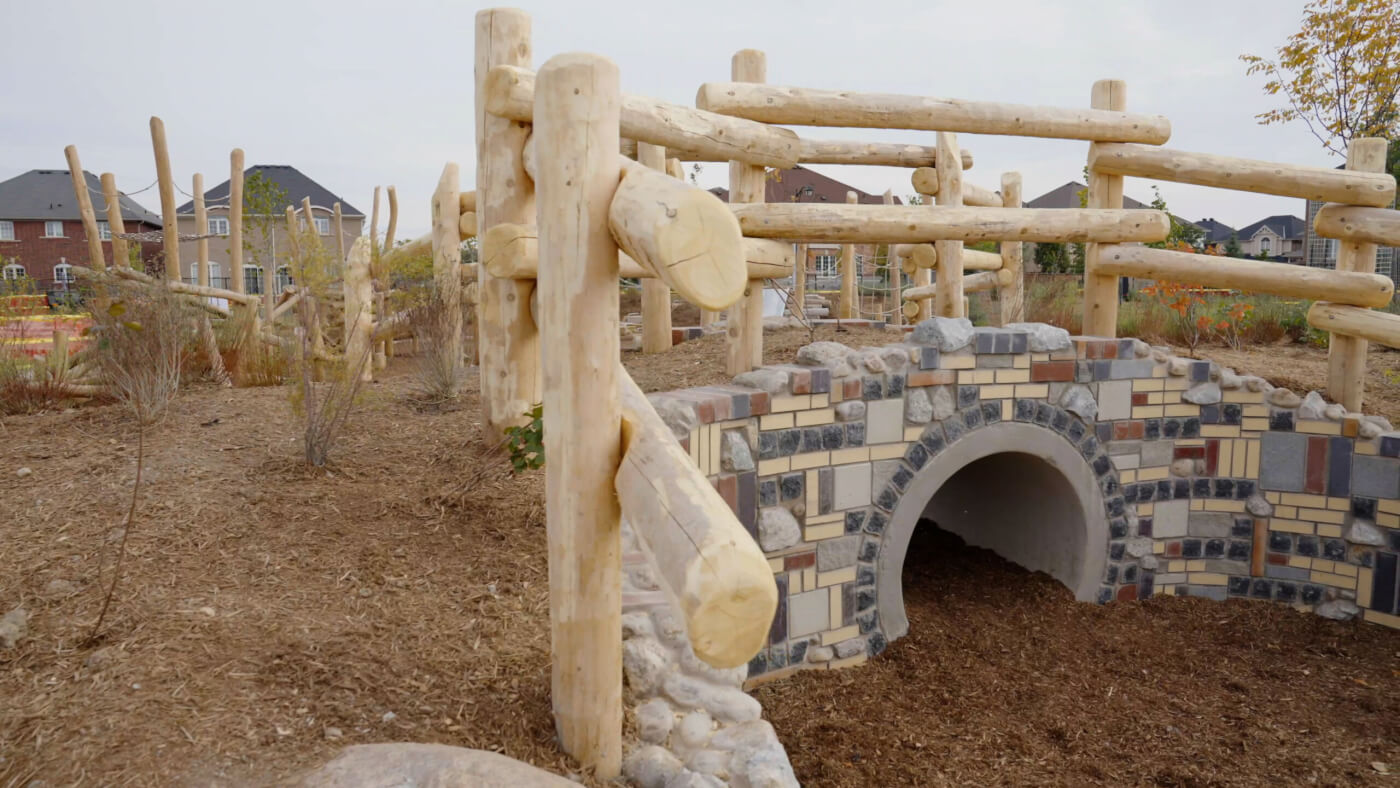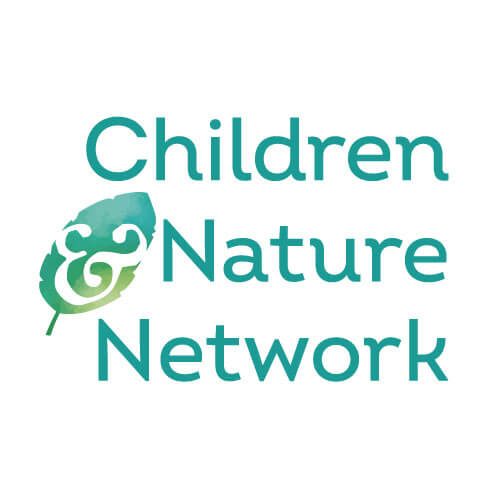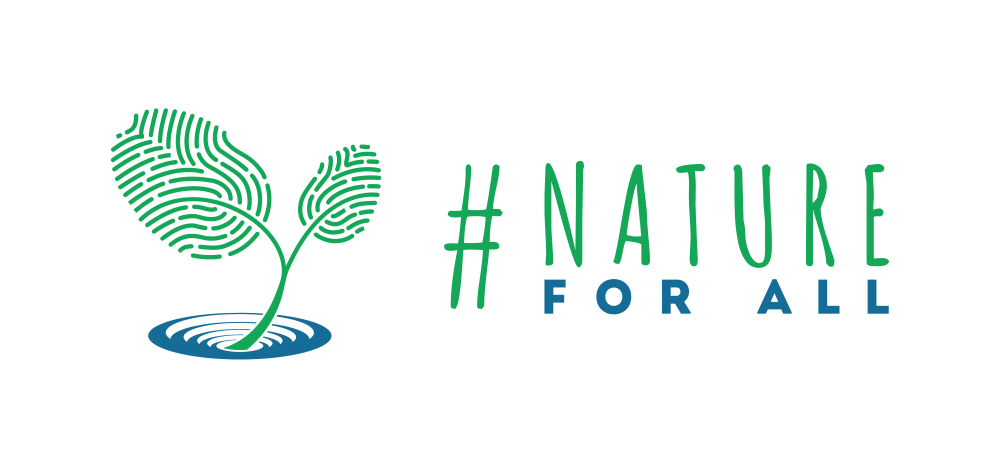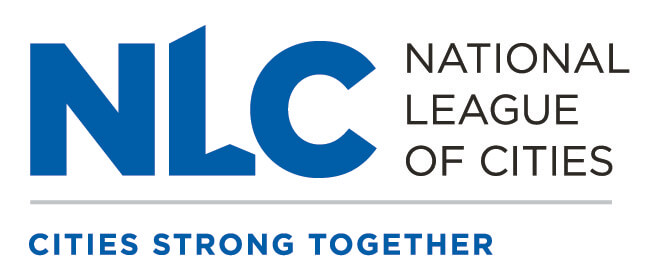Global Lessons on Greening School Grounds and Outdoor Learning
Canada | Evergreen, Climate Ready Schools
Evergreen is a national nonprofit organization dedicated to making cities livable and sustainable. Their work cuts across multiple sectors to address issues such as climate change, access to nature and public spaces, and child development within the realms of outdoor play and learning. School ground greening has been a core strategy in achieving their mission. Through the Climate Ready Schools program, school grounds are redesigned to better adapt to climate change, provide a more engaging environment for children to play and learn, and become a hub for community use outside of school hours. For their first pilot school, Evergreen worked with Berlin-based landscape architect Birgit Teichmann, integrating the Sponge School Ground Strategy, which removes impermeable surfaces and replaces them with extensive vegetation, allowing the site to act as a giant sponge.
Find more global case studies.
“The Irma Coulson Public School pilot is an exciting innovation project which features an extraordinary partnership between Evergreen and the Halton District School Board,” says Heidi Campbell, Senior Program Manager for Climate Ready Schools. “We are so excited to finally have Canada’s first climate-ready school buzzing with the energy of kids playing, climbing, and learning, as well as having members of this community exploring the variety of play opportunities even beyond school hours.”
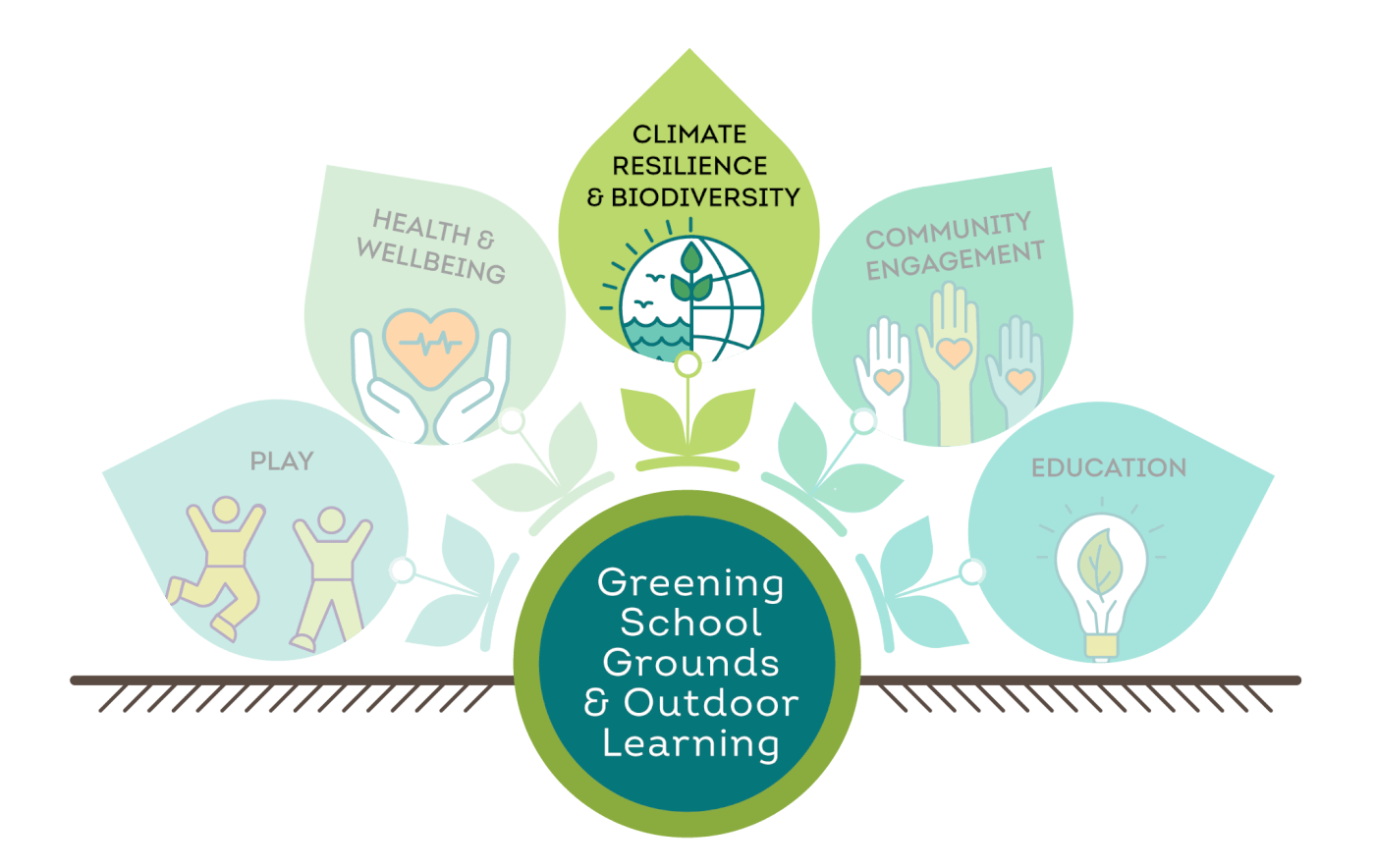
Key Aspects of the Case Study
- Climate adaptive. The green school grounds help lower surface and air temperatures by providing shade, and support biodiversity by making space for plant and animal species.
- Child-centered. Evergreen’s participatory design process gives children a voice and empowers them to become agents of change in their community.
- Scalable. Evergreen integrates best practices from around the world with the lessons they’ve learned and relationships they’ve built during their previous work transforming more than 6,000 Canadian schools.
- Partnership-focused. Working on shared priorities with school boards, city officials, landscape architects, project consultants and others is integral to the success of Evergreen’s work.
Some of the features in the redesign process include trees for shade and cooling, porous surfaces to allow for stormwater infiltration, natural play equipment, food sources for pollinators and food production for the community.
Central to Evergreen’s design process is listening to children and hearing their views and priorities while considering their developmental needs, taking into account their physical, social, emotional, and cognitive development. This child-centered approach helps to create vibrant nature-rich and climate resilient school grounds, for play and learning in all seasons.


